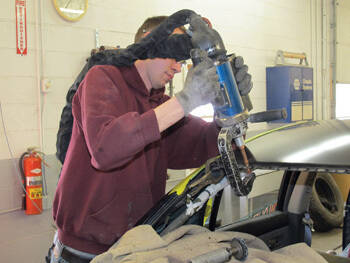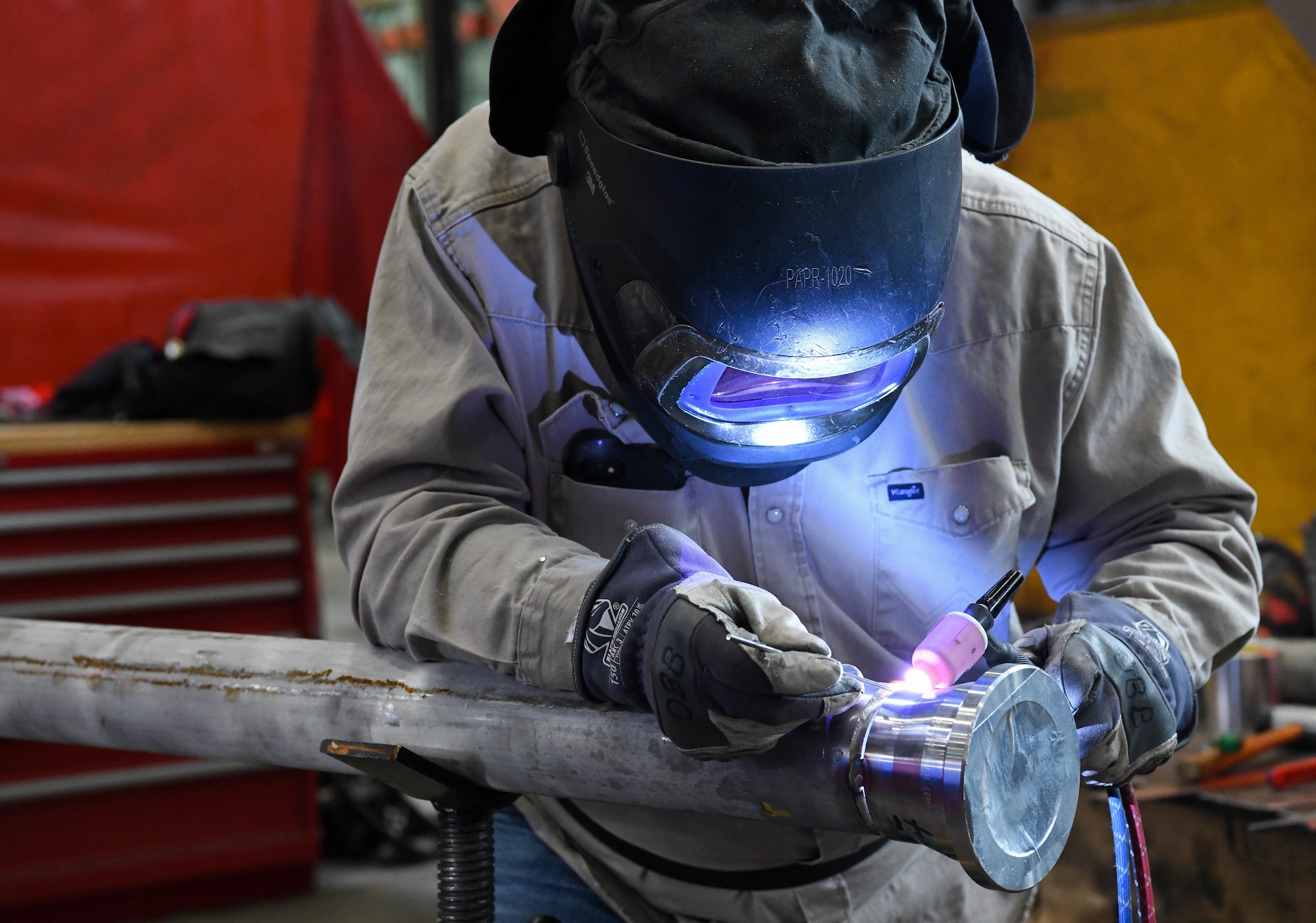Everything about Welding: Trick Insights Into Techniques and Ideal Practices for Success
Welding incorporates a range of methods, each matched for details materials and applications. Understanding these methods, such as GMAW, SMAW, and TIG, is crucial for achieving ideal outcomes. The right equipment and safety and security techniques can not be neglected. As prep work and troubleshooting play critical duties in the welding procedure, understanding these components can greatly improve the quality of the end product. What are the key variables that guarantee an effective weld?
Understanding Different Welding Strategies
Welding methods incorporate a range of methods, each fit to certain applications and products. Among one of the most usual techniques are Gas Steel Arc Welding (GMAW), Secured Metal Arc Welding (SMAW), and Tungsten Inert Gas Welding (TIG) GMAW, additionally known as MIG welding, is preferred for its speed and flexibility, making it perfect for slim products. SMAW, or stick welding, is preferred for its simplicity and performance in outside environments, especially with thicker steels. TIG welding offers accuracy and control, making it suitable for complex work and non-ferrous steels (Montana Mobile Welding and Repair Belgrade). Each strategy has its unique advantages and factors to consider, allowing welders to choose the best method based on the task's requirements, material type, and wanted results. Comprehending these techniques is necessary for effective welding
Crucial Welding Equipment and Devices
While different welding strategies call for specific skills, the best equipment and tools are equally necessary for attaining quality outcomes. Important welding tools consists of welding machines, which differ depending on the technique-- such as MIG, TIG, or stick welding. Safety equipment, consisting of headgears, aprons, and handwear covers, guarantees safety and comfort throughout the process. Additionally, clamps and fixtures aid secure products in position, making sure precision in welds. Consumables like welding poles, cable, and protecting gas are likewise essential elements that influence the quality of the weld. Furthermore, tools such as cutters and mills promote surface area preparation and post-weld completing, adding to a professional result. Investing in top quality tools ultimately improves the effectiveness and efficiency of welding projects.
Security Practices in Welding
Proper safety and security methods are vital in the welding market to secure workers from potential dangers. Welders should use suitable personal protective devices (PPE), including safety helmets with proper shading, handwear covers, and flame-resistant clothing. Ample ventilation is important to reduce direct exposure to damaging fumes and gases produced throughout the welding process. Additionally, employees should be educated in the appropriate handling of welding equipment to stop accidents. Fire safety and security procedures, such as maintaining combustible products far from the welding area and having fire extinguishers conveniently offered, are required. Routine examinations of equipment and work areas can help recognize prospective risks prior to they lead to crashes. By adhering to these safety practices, welders can develop a safer working atmosphere and decrease risks associated with their profession.
Readying Products for Welding
Preparing materials for welding is a vital step that substantially influences the quality and integrity of the end product (Belgrade Fabrication). Proper prep work entails cleaning up the surfaces to remove impurities such as rust, dirt, and oil, which can endanger the weld. Methods such as grinding, fining sand, or utilizing solvents are typically used to attain a clean surface area. In addition, guaranteeing that the materials fit together comfortably is crucial; gaps can bring about weak welds. It's additionally essential to take into consideration the positioning and positioning of the parts, as this will certainly influence the convenience of welding and the last end result. Lastly, selecting the proper filler product and making certain compatibility with the base steels is essential for achieving strong, durable welds
Tips for Achieving High-Quality Welds
Accomplishing top quality welds requires interest to information and adherence to finest practices throughout the welding procedure. Proper joint prep work is crucial, guaranteeing surfaces are clean and complimentary from pollutants. Selecting the suitable filler product and welding method based on the base steels is vital for ideal bonding. Maintaining regular traveling rate and angle while welding can advertise and stop issues harmony. Additionally, managing warmth input is important; extreme warmth can bring about bending and weakened joints. If required, regularly checking the welds throughout the procedure enables for prompt changes. Ultimately, using suitable post-weld therapies, such as cleansing and anxiety alleviation, can boost the resilience and honesty of the weld, ultimately making sure an effective outcome.
Troubleshooting Common Welding Issues
Welding commonly provides challenges that can affect the top quality and stability of the end product. Usual problems such as porosity, irregular weld beads, and overheating can occur, each calling for details fixing strategies. Recognizing these troubles is crucial for welders to boost their abilities and attain excellent outcomes.
Porosity Troubles Described
Although porosity can commonly be forgotten, it stays an essential concern in welding that can endanger the stability of an ended up product. Porosity describes the presence of tiny gas pockets within the weld grain, which can lead and damage the joint to early failing. This problem generally occurs from contaminants, wetness, or incorrect protecting gas coverage during the welding procedure. To reduce porosity, welders need to confirm that the base materials are tidy and completely dry, make use of proper securing gases, and keep regular welding specifications. Regularly checking the equipment and atmosphere can likewise help identify prospective problems prior to they show up in the weld. Attending to porosity efficiently is necessary for attaining strong, resilient welds that meet quality requirements.

Irregular Weld Beans
Inconsistent weld beads can substantially affect the top quality and stamina of a finished product. Different factors add to this concern, consisting of inappropriate travel rate, wrong amperage setups, and irregular electrode angles. When the welder moves as well quickly, a bead might show up slim and lack infiltration, while relocating too slowly can cause extreme build-up. In addition, using the wrong amperage can cause either undercutting or too much spatter, welding cast steel both of which compromise weld integrity. The welder's strategy, such as inconsistent lantern activity, can likewise lead to unequal bead appearance. To alleviate these problems, welders need to focus on preserving consistent, regulated movements and guaranteeing appropriate tools setups to attain harmony in their welds. Consistency is essential to achieving strong and dependable welds.
Getting Too Hot and Bending Issues
Extreme heat during the welding process can cause significant getting too hot and deforming concerns, impacting the architectural honesty of the workpiece. These troubles frequently materialize as distortion, which can compromise positioning sip welders and fit-up, making additional assembly challenging. Factors adding to overheating include the option of welding specifications, such as voltage and take a trip speed, as well as the kind of product being welded. To reduce these problems, welders need to keep constant traveling speed and appropriate heat input while keeping an eye on the workpiece temperature level. Additionally, pre-heating or post-weld warm therapy can assist ease tensions brought on by quick air conditioning - Belgrade Fabrication. Routine assessment and adherence to best techniques are essential in avoiding overheating and guaranteeing the long life and integrity of welded structures
Often Asked Concerns
What Are the Occupation Opportunities in the Welding Sector?
The welding sector uses varied profession opportunities, including positions as welders, examiners, engineers, and instructors. Specialists can operate in production, building, aerospace, and automotive markets, gaining from strong need and competitive wages in numerous roles.
How Can I Enhance My Welding Rate Without Sacrificing High Quality?
To improve welding speed without giving up quality, one need to exercise effective methods, preserve equipment, optimize setups, and boost hand-eye sychronisation. Normal training and looking for feedback can also significantly add to achieving faster, high-quality welds.
What Accreditations Are Readily Available for Welders?
Countless accreditations exist for welders, consisting of those from the American Welding Culture (AWS), the National Facility for Construction Education and Research Study (NCCER), and numerous industry-specific organizations. These credentials enhance employability and demonstrate ability efficiency.
Exactly How Does Welding Impact the Features of Metals?
Welding influences the buildings of steels by modifying their microstructure, which can cause adjustments in firmness, toughness, and ductility. Heat input and air conditioning rates throughout the process considerably influence these material characteristics.
Can I Weld Dissimilar Metals With Each Other?
